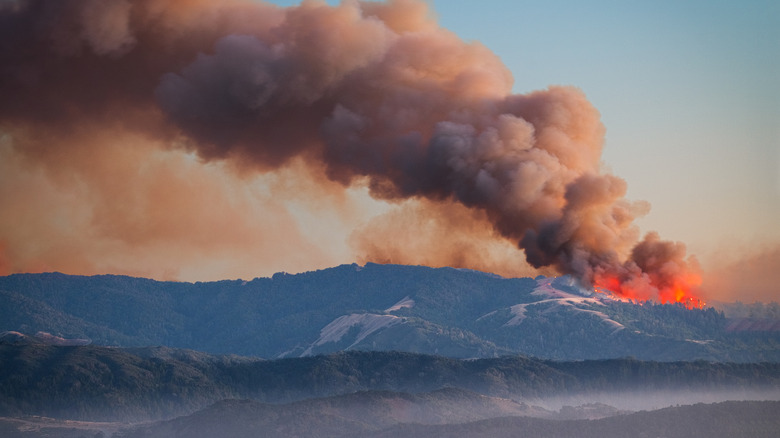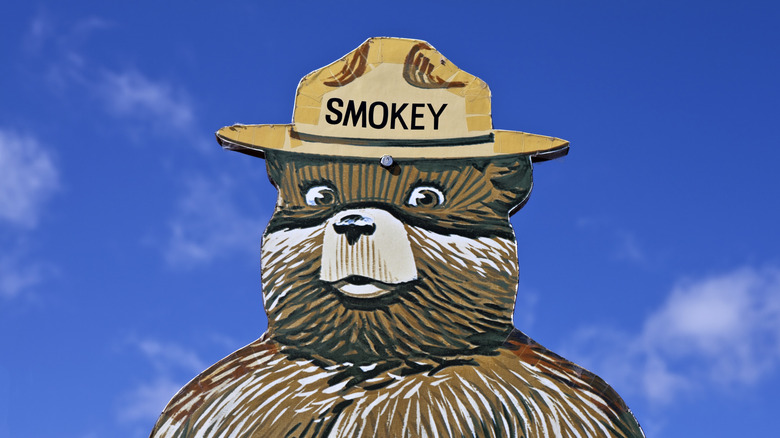An Iconic Cartoon Character Bears Some Of The Blame For California's Devastating Wildfires
As fire crews around Los Angeles County raced to fight the Palisades and Eaton fires in January 2025, residents throughout the Golden State were once again forced to reckon with a grim reality. As much as we'd like to see such disasters as freak aberrations, in reality this was only the latest step in a trend, and it won't be the last. According to the California Department of Forestry and Fire Protection, 18 of the 20 most destructive wildfires in the state's history have come in the 21st century, with seven of them occurring just within the past five years.
The main culprit of worsening wildfires has been climate change. Droughts and increased forest fires are two of the worst impacts of global warming, wreaking havoc around the globe. However, a beloved cartoon mascot also deserves some blame for teaching us all the wrong lessons about wildfire prevention.
Smokey Bear is an American icon. The anthropomorphic bear with his park ranger hat can be seen on countless posters, shirts, buttons, and the like, warning that "Only you can prevent forest fires." Originally making his debut during WWII over fears that Japanese forces might set fires along the West Coast, Smokey has gone on to become the longest-running public service campaign in American history. Unfortunately, his zero-tolerance policy for forest fires is actually misguided. Nature needs fires to some degree, and by trying to prevent them entirely, we've made California's forests more vulnerable than ever before.
What Smokey got wrong
Smokey Bear deserves a lot of credit for raising awareness of the risks of wildfires, and some of his advice, such as urging caution when disposing of matches and instructing campers on safe fire construction, is excellent. However, throughout its history, the Smokey Bear campaign has promoted a policy of immediate suppression should any flames ignite in the wild. Immediate suppression is the practice of immediately extinguishing a fire, but in nature the laws are not so clear-cut, and some fires must be allowed to burn.
Before human activity fundamentally altered our planet, forests went through regular cycles of fires. Blazes would clear away dead plant material from the forest floor, and although they would take out smaller plants, large trees would be hardy enough to survive. However, under Smokey's immediate suppression policy, people began dousing small natural fires, stopping this natural cycle in its tracks. Dead plant material began to build up more than ever before, turning the forest floor into a pile of dry kindling.
Forest fires spread fast, and the more kindling you give them, the worse the damage will be. Decades of allowing undergrowth to accumulate on forest floors mean that now, when a spark does ignite, the resulting fire is much more intense than it would have been under natural circumstances. Fortunately, with the dramatic rise in wildfires over the last decade, immediate suppression has come under scrutiny, and many agencies, including Cal Fire, now practice controlled burns in an attempt to mimic the natural processes that humans have disrupted for so long.

